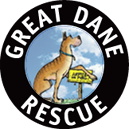Basic Genetics
Take a look at your dog. You can see quite a few things about her. You can tell what her coat color is, if her hair is long or short, what her eye color is. You can even "look" through the use of x-rays and laboratory tests, to determine if her hips are sound, and if her thyroid gland it working properly. All of these things make up the dog's phenotype.
Your dog's genotype refers to what is actually present in her DNA, whether or not that has transferred to her appearance, build, how her body functions. Each dog has two full sets of genetic information, one from each parent. So each locus (genetic unit) has a pair of genes. This pair of genes can be either homozygous meaning that both of the genes in the pair are identical or heterozygous meaning that the two genes are different. There may only be two options for a particular locus, or there may be many options. Any single trait may be controlled by a single locus, a single pair of genes, or it may be controlled by the combination and interaction of many pairs of genes. The available genetic options at each locus are called alleles.
Dominant and recessive refer to the gene's behavior if they are different. In simple terms, if the two genes at a locus are different, the dominant gene will determine the dog's phenotype, what you see. A dog will only show a recessive trait if BOTH genes at a locus are the recessive allele. Both dominants or one dominant and one recessive will result in the dominant phenotype. Dominant and recessive DO NOT mean "good" and "bad." In fact, many desirable traits in Great Danes are the result of recessive genes. However, it is easier to "breed away" from a bad dominant gene--if the gene is there, you see it, and you can choose not to breed the animal displaying the trait. A recessive trait can be carried, hidden, for many generations, and will never display the trait unless it gets paired up with another matching recessive gene from the other side of the family.
Unfortunately, not everything works as a simple dominant/recessive. At some loci, the different alleles may have a relationship of incomplete dominance. That is, if both genes are recessive, the trait coded by the recessive will be displayed. If the locus is heterozygous, the phenotype will show a "halfway in between" appearance. Only when the locus is homozygous for the dominant will the appearance show the dominant gene.
In a simple case, there are only two alleles that can appear there. That locus will either be homozygous for the dominant, heterozygous, or homozygous for the recessive. Homozygous dominant, the dominant trait will appear. Likewise if it is homozygous recessive, the recessive trait will appear. In the heterozygous case, you will see either the dominant phenotype (if the alleles have simple dominant-recessive relationship) or a phenotype that is halfway in between (if there is an incomplete dominance relationship.) At some gene loci, there are several genes that can appear there. Many times, we can rank these allelles in order of dominance. Since only two allelles will be present in any one dog, we can still use the dominant-recessive idea to see what will or could be produced.
Author: Ana Greavu-Rachow

